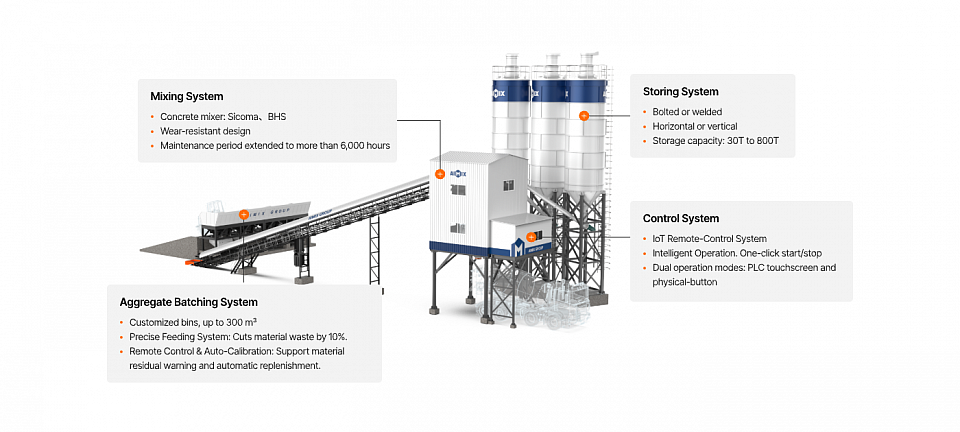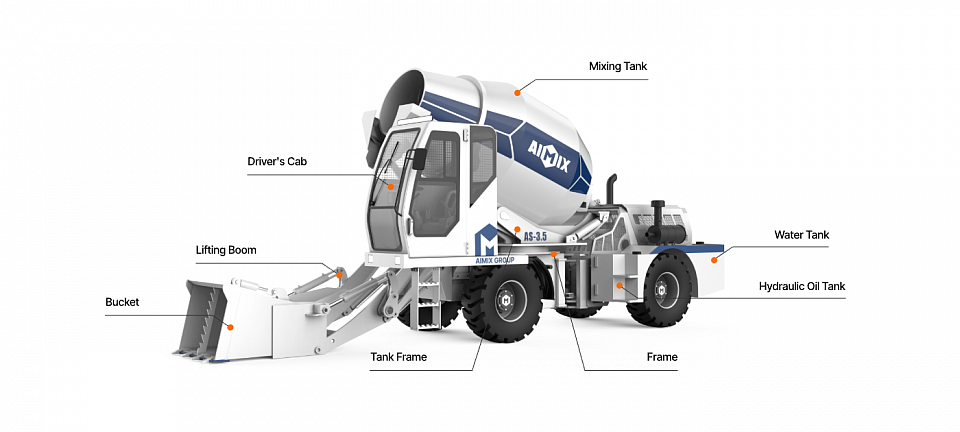Wet Mix vs. Dry Mix Batching Plant: Which One is Right for Your Project?
Are you struggling to choose between a wet mix batching plant and a dry mix batching plant? Both have unique advantages, but the best choice depends on your project needs. Let’s break down the differences so you can make an informed decision.
What is a Wet Mix Batching Plant?
A wet mix batching plant combines all ingredients—water, cement, aggregates, and additives—before discharging the mixture into a truck. This ensures a homogenous, ready-to-use concrete mix.
Key Advantages of Wet Mix Plants
- Consistent Quality: Produces uniform concrete with fewer segregation risks.
- Faster Production: Ideal for large-scale projects needing high output.
- Better Workability: Perfect for pumping and long-distance transport.
- Reduced On-Site Labor: Minimizes manual mixing errors.
Wet mix plants are great for highways, bridges, and high-rise buildings where quality matters most.
What is a Dry Mix Batching Plant?
A dry mix batching plant mixes dry ingredients first, adding water later—usually in transit or on-site. This method offers flexibility for various job sites.
Key Advantages of Dry Mix Plants
- Lower Initial Cost: More affordable setup than wet mix plants.
- Flexible Water Control: Adjust water content based on weather or project needs.
- Easier Transport: Dry materials are lighter, reducing transportation costs.
- Suitable for Remote Sites: Works well where water supply is limited.
Dry mix plants excel in small to medium projects like residential buildings and rural roads.
Wet Mix vs. Dry Mix: Which One Should You Choose?
Deciding between a wet mix and dry mix batching plant depends on your project requirements. A wet mix plant combines all materials before discharge, ensuring consistent quality and faster production—ideal for large-scale jobs like highways and high-rises. On the other hand, a dry mix plant blends dry ingredients first, adding water later, making it more cost-effective and flexible for smaller or remote projects.
If you prioritize high output and premium concrete quality, a wet mix plant is the better choice. But if you need lower upfront costs and adaptable mixing, a dry mix plant may suit you best. Consider your project size, budget, and location to make the right decision.
If you need high-quality, ready-mix concrete fast, go for a wet mix plant. If cost and flexibility are priorities, a dry mix plant is better.
Bonus Tip: Pair Your Plant with a Self-Loading Concrete Mixer!
Want even more efficiency? Combine your batching plant with a self-loading concrete mixer. These mixers load, mix, and transport concrete in one machine—saving time and labor.
Why Use a Self-Loading Mixer?
- All-in-One Solution: No need for separate mixing and transport equipment.
- Ideal for Small Sites: Perfect for tight or remote construction areas.
- Fuel & Labor Savings: Reduces operational costs significantly.
Whether you choose a wet or dry mix plant, a self-loading mixer can boost productivity.
Final Thoughts: Make the Right Investment
Choosing between a wet mix and dry mix batching plant depends on your project scale, budget, and quality needs.
- Go Wet Mix for large-scale, high-quality projects.
- Go Dry Mix for smaller, cost-sensitive, or remote jobs.
Still have questions? Contact us today! We’ll help you pick the perfect concrete solution for your needs.
Upgrade your construction efficiency—choose the right batching plant now!


